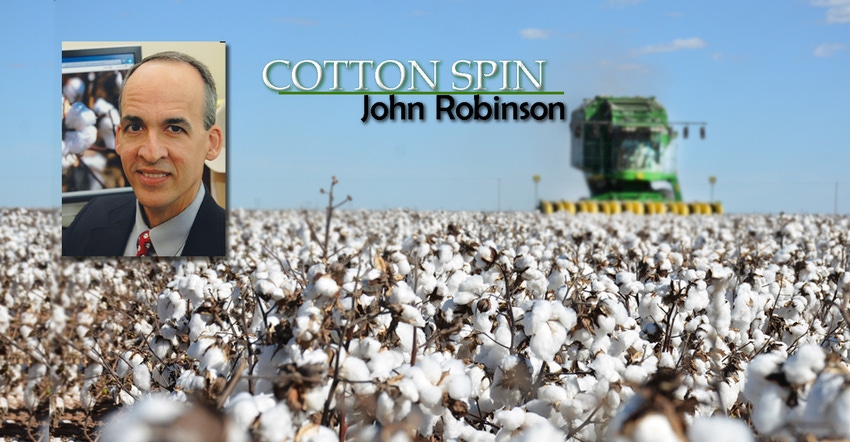
But what is normal? As I write this, old crop cotton futures on the ICE are trading between $1.20 and $1.25 per pound, while new crop Dec ’22 is almost $1.05. The level of prices is historically high and rare. That is to say, it isn’t normal. Cotton may be fairly priced given the balance of recovering demand and constrained supply, but I doubt that dollar cotton is the new normal.
Let’s look at various parts of this overall picture. The recovery in cotton demand is normal. That is to say, world consumption has returned to its typical uptrend of 1.5% to 2% increase per year.
ICE cotton futures prices are currently inverted. That means that the near-term ICE futures contracts are higher than the later, deferred contracts. Inversions happen from time to time when there are unexpected near-term supply shortages or demand surges. But inversions are not the normal seasonal pattern. The economics of storing and selling cotton further in the future generally makes deferred futures prices more expensive.
The implication of an inverted market is that farmers and merchants have no economic incentive to store cotton for later sale. Rather, inverted prices are a signal to sell and ship cotton to market. The size of the current inversion is such that it implies that merchants should pay the currently higher-than-normal costs of shipping in order to get this cotton to market. This means that there may be little carryover going into the next marketing year, contributing to tight supplies and high prices.
While I’m on that subject, let me say that the current supply chain disruption is decidedly abnormal. The lack of truck drivers, containers, and space on ocean ships is something that happens mainly during wars, pandemics, and other economic upheavals. My expectation of the current supply chain disruption is that market incentives will lead to its correction sometime in 2022. That is assuming there are no new disruptions of a medical, military, or monetary nature.
The current drought conditions in the Southern Plains region are, unfortunately, fairly normal. If NOAA’s forecast is correct, the La Niña drought may transition into a normal hot Texas summer. The implications might be a crop under 18 million bales, which would keep supplies tight and prices high. The perceived short-crop situation could also encourage merchant buyers to buy and sell more inventory earlier in the year, with more of that contracting on an on-call basis. Similarly, the general expectation of a short crop situation could induce more speculative buying. The combination of speculative buying and mill fixation buying (a feature of on-call transactions) could support new crop prices in the same way that old crop prices were pushed over a dollar in 2021.
Lastly, there is always a downside risk to consider. It is not normal for spreading droughts in the spring to get turned around by above-average rains in June and July. But it could happen, as it did in 2021. And if it happens on 13 or 14 million acres of U.S. cotton plantings, then the picture could get ugly.
For additional thoughts on these and other cotton marketing topics, please visit my weekly on-line newsletter at http://agrilife.org/cottonmarketing/.
About the Author(s)
You May Also Like




